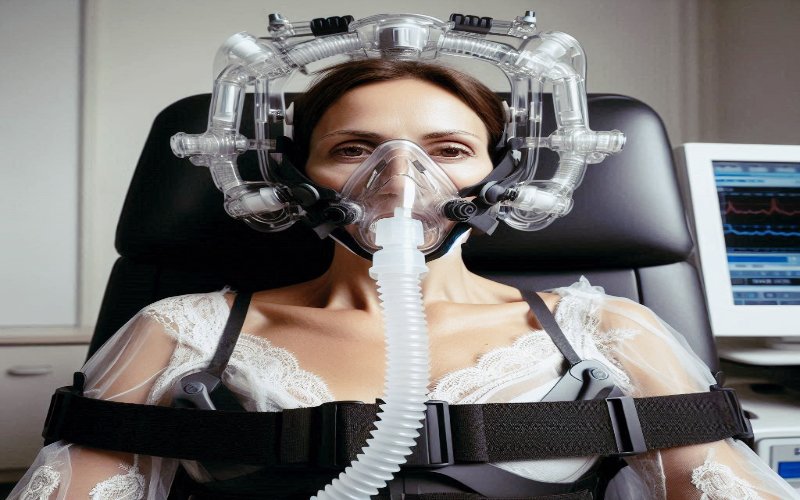Wearable technology has rapidly evolved from simple fitness trackers to sophisticated devices capable of monitoring various aspects of our health and daily activities. These innovations are not just tech trends; they represent a significant shift in how we approach personal health, fitness, and connectivity. In this post, we’ll explore some of the most exciting advancements in wearable technology innovations, highlighting the latest trends and innovations that are shaping this dynamic field.
The Evolution of Wearable Devices
Wearable technology has come a long way since the early days of pedometers and heart rate monitors. Initially, these devices were designed primarily for fitness enthusiasts who wanted to keep track of their steps, distance, and calories burned. However, advancements in sensor technology, data analytics, and connectivity have transformed wearables into comprehensive health monitoring tools.
Today, wearable devices like smartwatches, fitness trackers, and smart rings do much more than track physical activity. They monitor heart rate, sleep patterns, blood oxygen levels, and even detect irregular heart rhythms. Companies like Apple, Fitbit, and Garmin have continually pushed the boundaries, incorporating more advanced features into their devices to provide users with a holistic view of their health. For example, the Apple Watch now offers electrocardiogram (ECG) capabilities, allowing users to detect signs of atrial fibrillation, a serious heart condition.
Advanced Biometrics and Health Monitoring
One of the most significant innovations in wearable technology is the integration of advanced biometric sensors. These sensors can measure a wide range of physiological parameters, providing users with valuable insights into their health. For instance, wearable devices can now monitor hydration levels, blood pressure, and even stress levels by analyzing heart rate variability and skin conductance.
This level of monitoring is particularly beneficial for individuals with chronic conditions such as diabetes, hypertension, and sleep apnea. Continuous glucose monitors (CGMs), for example, have revolutionized diabetes management by providing real-time blood sugar levels without the need for finger pricks. Wearables that offer such comprehensive health insights are not only enhancing personal health management but also enabling proactive healthcare, where potential issues can be detected and addressed early on.
Innovations in Smart Clothing and Flexible Electronics
The development of smart clothing is another exciting trend in wearable technology innovations. Unlike traditional wearables, smart clothing incorporates sensors directly into the fabric, allowing for more natural and continuous health monitoring. Companies like Hexoskin and Oura are leading the way with garments that track heart rate, respiration, and movement seamlessly.
These innovations make it easier for users to monitor their health without the need for bulky devices. For example, Hexoskin’s smart shirts can continuously monitor cardiac, respiratory, and activity data, making them ideal for both athletes and patients undergoing rehabilitation. The rise of flexible electronics has also played a significant role in this evolution, enabling the creation of lightweight, stretchable materials that can conform to the body’s shape and provide more accurate readings.
Integration with Artificial Intelligence (AI)
Artificial Intelligence (AI) has significantly enhanced the capabilities of wearable devices. AI algorithms analyze the vast amounts of data collected by wearables, providing users with personalized insights and recommendations. For instance, the Apple Watch uses AI to detect falls and can automatically alert emergency contacts if a hard fall is detected.
AI integration goes beyond safety features; it also helps create personalized fitness and health plans. Devices like Fitbit and Garmin utilize AI to analyze user data and suggest workouts, dietary plans, and sleep routines tailored to individual needs. This level of customization not only motivates users to achieve their health goals but also ensures that the recommendations are based on their specific physiological data.
Wearables for Mental Health Monitoring
Wearable technology is also making strides in mental health monitoring. With the growing awareness of mental health issues, there is an increasing demand for devices that can monitor stress levels, mood, and sleep patterns. Wearables equipped with sensors to detect changes in heart rate variability and skin conductance can provide insights into a user’s stress levels, helping them manage anxiety and improve overall well-being.
For example, the Fitbit Sense smartwatch includes an Electrodermal Activity (EDA) sensor that measures tiny electrical changes in the sweat level of your skin, which can indicate your body’s response to stress. By monitoring these indicators, users can gain a better understanding of their mental health and take steps to reduce stress through guided breathing exercises, meditation, or other relaxation techniques.
Augmented Reality (AR) and Virtual Reality (VR) Integration
The integration of Augmented Reality (AR) and Virtual Reality (VR) into wearable technology is creating new possibilities for both entertainment and professional applications. AR-enabled smart glasses, like Google Glass and Microsoft HoloLens, overlay digital information onto the physical world, enhancing navigation, communication, and access to information in real-time.
In healthcare, AR and VR wearables are being used for surgical training, patient education, and even pain management. VR headsets like the Oculus Rift provide immersive experiences that can distract patients from pain or anxiety, while AR applications help surgeons visualize complex procedures. As these technologies become more sophisticated, wearable technology innovations will play an even more integral role in various fields beyond just fitness and health.
Wearables in the Workplace
Wearable technology is increasingly being adopted in workplace settings to enhance productivity, safety, and employee well-being. Companies are using wearables to monitor employee health metrics, promote wellness programs, and even improve safety protocols in hazardous environments. For example, construction workers might wear helmets embedded with sensors to detect exposure to harmful substances or monitor vital signs in real-time, alerting them to potential dangers.
Additionally, wearables like smart badges or wristbands can facilitate hands-free communication and task management, improving workflow efficiency. These devices can also monitor environmental conditions, such as temperature and humidity, to ensure a safe working environment. By integrating wearable technology into their operations, businesses can foster a safer and more productive workplace, ultimately benefiting both employees and employers.
Fashion and Customization in Wearable Tech
As wearable tech becomes a bigger part of our everyday lives, more people are focusing on style and making these items feel personal. Modern wearables are designed to be both functional and aesthetically pleasing, catering to diverse tastes and preferences. Companies like Apple and Samsung offer a range of customizable features, such as interchangeable bands, customizable watch faces, and stylish designs that allow users to express their individuality.
The trend towards sustainable fashion is also influencing the design of wearables. Manufacturers are increasingly using eco-friendly materials to create devices that are not only durable but also environmentally responsible. This shift towards sustainable practices aligns with the growing consumer demand for ethical and sustainable products, further expanding the appeal of wearable technology innovations.
Enhanced Connectivity and Interoperability
Enhanced connectivity is a key feature driving the future of wearable technology. The integration of 5G networks and the Internet of Things (IoT) is enabling wearables to connect seamlessly with other devices and systems. This enhanced connectivity allows for real-time data transfer, improved performance, and more reliable communication between devices.
For example, a smartwatch can sync with a smartphone, smart home devices, and even healthcare systems to provide a comprehensive view of the user’s health and activity. Wearables are also becoming more interoperable, meaning they can work across different platforms and devices, enhancing their utility and user experience. This interoperability is particularly important in healthcare, where wearable devices can share data with electronic health records (EHRs) to provide doctors with a more complete picture of a patient’s health.
Innovations in Sensor Technology
Innovations in sensor technology are at the heart of wearable advancements. From heart rate monitors to electrodermal activity sensors, the development of new, more sensitive sensors is enabling wearables to collect a wider range of data with greater accuracy. For instance, wearable sweat sensors can now monitor various biomarkers in sweat, providing insights into hydration levels, electrolyte balance, and even stress hormones.
These advancements are paving the way for more sophisticated health monitoring solutions that can detect subtle changes in the body before they manifest as symptoms. For example, researchers are developing wearable sensors that can detect early signs of respiratory infections or monitor chronic conditions like asthma and COPD. As sensor technology continues to evolve, wearables will become even more integral to personalized healthcare and preventive medicine.
Data Privacy and Security Considerations
As wearable technology becomes more sophisticated and capable of collecting sensitive health data, concerns around data privacy and security are growing. Wearable devices often collect a vast amount of personal information, from daily activity levels to vital health metrics. This data can be highly valuable, not just to users, but also to third parties like advertisers and insurers.
To address these concerns, companies are implementing stronger data protection measures, such as encryption and anonymization. For instance, Apple emphasizes user privacy by ensuring that health data collected by the Apple Watch remains on the device unless explicitly shared by the user. As consumers become more aware of privacy issues, transparency and robust security measures will be crucial for maintaining trust in wearable technology innovations.
Future Directions in Wearable Technology
Looking ahead, the future of wearable technology is filled with exciting possibilities. The integration of advanced technologies like AI, AR, and VR is just the beginning. We are likely to see the development of even more innovative devices that can monitor a wider range of health parameters, provide real-time feedback, and offer personalized interventions.
For example, researchers are exploring the potential of bioresorbable electronics—devices that can dissolve in the body after completing their function, eliminating the need for surgical removal. Such innovations could open new avenues in minimally invasive surgery and temporary health monitoring. Additionally, we can expect wearables to become even more integrated into smart home ecosystems, working seamlessly with other IoT devices to enhance user comfort and convenience.
The Role of Wearables in Preventive Healthcare
Wearable technology is playing an increasingly important role in preventive healthcare. By providing continuous, real-time monitoring, wearables can help detect early signs of health issues before they become serious problems. For example, devices that monitor heart rate variability can provide early warnings of potential cardiovascular issues, allowing users to seek medical attention before a minor issue becomes a major health concern.
Moreover, wearables can support users in maintaining healthy lifestyles by providing feedback on their daily activities, sleep patterns, and stress levels. By helping users stay informed and engaged with their health, wearables are empowering individuals to take proactive steps towards maintaining their well-being, ultimately reducing the burden on healthcare systems.
Conclusion
Wearable technology innovations have transformed the way we monitor our health, engage with digital environments, and interact with our surroundings. From tracking physical activity and vital signs to providing immersive AR and VR experiences, wearables are becoming an indispensable part of our daily lives. As technology continues to advance, we can expect wearables to play an even more significant role in healthcare, the workplace, and beyond.
The future of wearable technology is bright, with endless possibilities for enhancing personal health management, workplace safety, and user experience. However, as these devices become more integrated into our lives, it is essential to consider issues such as data privacy, security, and ethical use. By addressing these concerns and continuing to innovate, the wearables industry will ensure that its products remain valuable tools for enhancing our lives in meaningful ways.
Also visit on techitl.com.




